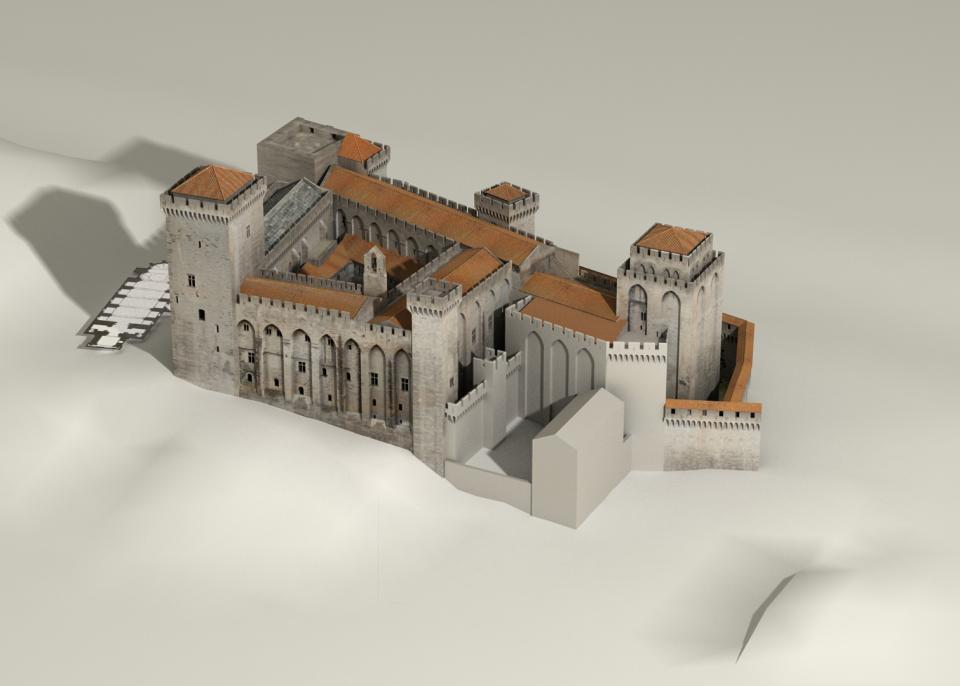John XXII first pope builder 1316-1334
He invests the episcopal residence, which adjoins the cathedral and transforms it into a pontifical residence. Nearby, he erected a courtroom, the remains of which in the main courtyard are the only witnesses. The current Palace of the Popes is mainly the work of the two pontiffs who succeeded John XII: Benedict XII and Clement VI. They will build the largest Gothic palace in nearly twenty years.
Benedict XII creation of a papal palace 1335-1342
Benedict XII, entrusted the management of the site to his compatriot from the county of Foix, the architect Pierre Poisson. Powerfully seated on the rock, the building takes up the organization of the palace of John XXII. Dominating the city with its high walls, like a dungeon, the Tour du Pape is the major element of the project. It is the heart of the papal apartments, and protects the sacred person of the pope and the riches of the Church. It is connected to the buildings of the court by two bodies of private apartments.
In their extension are the wing of the consistory flanked by the tower of the chapels, as well as the towers of Trouillas, the kitchens and the latrines. Gardens are laid out below. The wings of the consistory, of the Hosts, of the Familiars and the Chapel, form a quadrilateral which encloses a courtyard. Benedict XII had his palace richly decorated with furniture, hangings and murals.

Clement VI the new extensions (opus novum) 1342-1352
From the start of his pontificate, Clement VI completed the Tour de Trouillas, added a new kitchen tower and had the Tour de la Garde-Robe built, adjoining the Tour du Pape. Subsequently, the architect Jean de Louvres, originally from Ile-de-France, acquired the status of project manager and supervised the entire organization of the construction site for the new extensions, which would mobilize an average of 600 men in a context nevertheless troubled by the Hundred Years War and the Black Death.
To begin with, Jean de Louvres had the neighboring district destroyed and accomplished his major and spectacular work: the construction of the Grande Audience, which was soon topped by the Grande Chapelle, flanked by the Grand promenade. The architect then built the Grand Dignitaries wing which closes on a semi-public space and thus creates the Cour d'Honneur.
With Clement VI, Gothic elegance enters the palace. The ribbed vaults abound; sculptures, rib caps, moldings adorn the stone. He attracted the greatest intellectuals and artists of the time to his court, such as the painter Mattéo Giovannetti, and made Avignon a cultural melting pot and a focus for European exchanges. He magnifies his palace by the attention and scale he gives to the decorations (frescoes, stained glass, goldsmithery, furniture, hangings, etc.).
When he died, most of the buildings were built. Over the following decades, completion work and comfort fittings were undertaken by Innocent VI (Saint Laurent and La Gâche tower, conclave gallery, etc.) and Urbain V (garden and Roma).
After the return of the papacy to Rome
At the beginning of the XNUMXth century, at the end of the Great Schism after the reigns of Clement VII and Benedict XIII, the palace became the residence of legates and then of vice-legates, until the Revolution. Then it was transformed into a barracks until it opened to the public at the beginning of the XNUMXth century.
